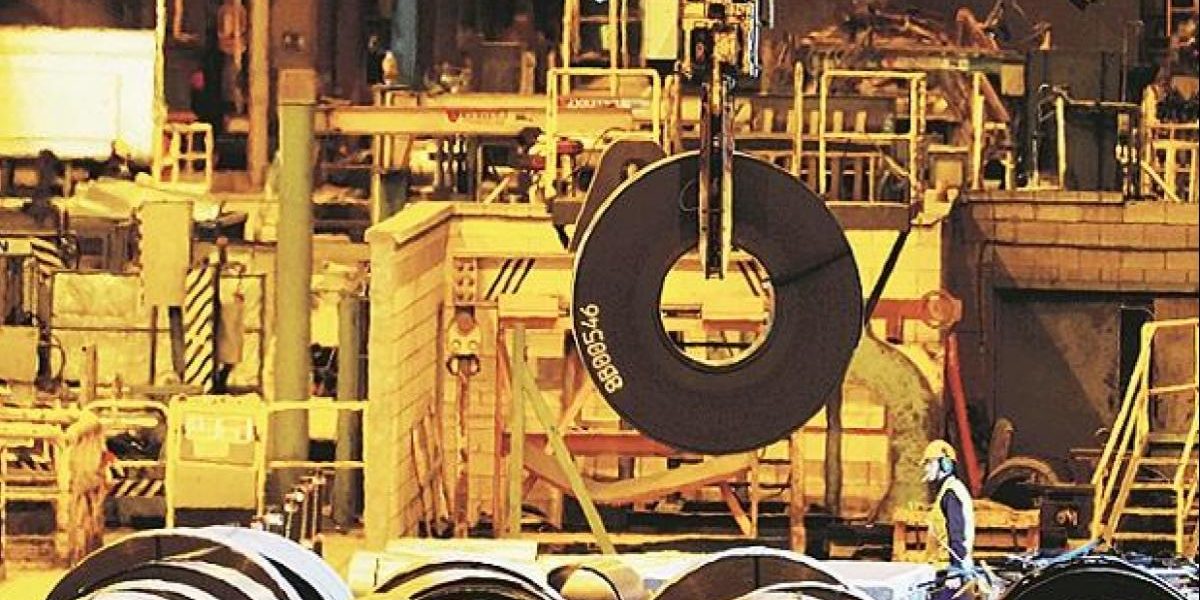At a time when exports are battling a global slowdown, the latest restriction on steel product imports will add to the woes of India’s engineering goods exporters, said the Engineering Export Promotion Council (EEPC). Steel is raw material for engineering goods companies.
In a letter to Union Commerce and Industry Minister Piyush Goyal, EEPC Chairman Ravi Sehgal said a Directorate General of Foreign Trade notification of September 5, in the name of Steel Import Monitoring System, has mandated compulsory registration for import of most of the steel products — under Chapter 72 and few products under Chapter 73 and 86 of ITC (HS).
Share to TwitterShare to LinkedInShare to More
steel plant, steel, steel factory
Stock Photo
ALSO READ
Lower realisation, rising imports may hit steel firms’ earnings: Analysts
Essar Steel sets target of 7.43 mn tonnes crude steel production in FY20
Per capita steel consumption in India a third of global figure: Study
India’s steel output edges past world in H1 of CY2019, lags China
Sluggish market may delay Posco decision on investing in India steel plant
At a time when exports are battling a global slowdown, the latest restriction on steel product imports will add to the woes of India’s engineering goods exporters, said the Engineering Export Promotion Council (EEPC). Steel is raw material for engineering goods companies.
In a letter to Union Commerce and Industry Minister Piyush Goyal, EEPC Chairman Ravi Sehgal said a Directorate General of Foreign Trade notification of September 5, in the name of Steel Import Monitoring System, has mandated compulsory registration for import of most of the steel products — under Chapter 72 and few products under Chapter 73 and 86 of ITC (HS).
While compulsory registration will monitor steel product inflow into the country, the specifications seem unwarranted, the engineering exporters’ body said. The notification states that an importer can apply for registration between the 60th day and the 15th day before the expected date of arrival of consignment. For this, registration fee has also been specified.
“Registration is fine (as it monitors imports) but why levy the fee? It only adds to the input cost of the importer. The fee part is discouraging. There is no rationale behind this move,” said Suranjan Gupta, executive director, EEPC India.
Steel products are imported in bulk quantities with a minimum lot size of 50-100 tonne. The registration fee to be levied will be a certain percentage of the imported quantity.
The restriction of not registering later than 15th day before the expected date of arrival of consignment is another hurdle, said Gupta. “In the case of neighbouring countries like Dubai and some others we get to know of consignment arrival only 4-5 days in advance, how do we meet the 15th day criterion in such a scenario?” he added.
Meanwhile, engineering exports have declined by around 2 per cent during April-July. Bouncing back may be difficult given the fact that the European Union has further slashed the quota on steel products shipped from India. Also, the imposition of Section 232 and withdrawal of Generalized System of Preferences by the US has restricted exports to the major market.
Under these circumstances, any rise in prices or restrictions on steel imports would add to the problems of the engineering exporters, said the letter.
The letter mentioned that while it is believed that the system has been brought in on the lines of the US “Enforcement and Compliance Steel Import Monitoring and Analysis System (SIMA), it should be noted that there is no application fee for the SIMA licence for imports. The licence may be filled out up to 60 days prior to the date of importation/expected date of entry and will be valid for 75 days.
“We are okay with making the system an import monitoring system but the specifications are making it an import restriction system,” said Gupta.
India’s engineering exports account for 25 percent of the total exports. Any move that would curtail the country’s exports would only add to industry issues amid slowing GDP growth which hit a 6-year low of 5 per cent for the first quarter of this fiscal year.














